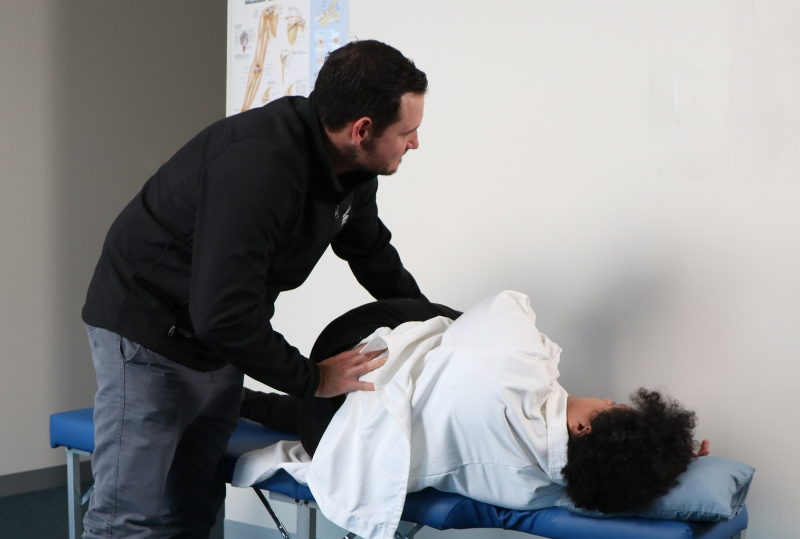Understanding sciatica
by Jeremy Balbin

Man waking up in the morning and suffering from sciatica pain
by Jeremy Balbin
What is sciatica?
The term sciatica refers to pain along the pathway of the sciatic nerve, which is the longest and thickest nerve in the body. The sciatic nerve originates from the lumbar spine, and travels through the buttocks to the back of the knee, where it splits into other nerves that continue down the leg to your toes. Irritation to the nerve can cause symptoms anywhere along this pathway.
“True” sciatica is typically described as sharp, shooting or electrical pain down the leg to the foot, and it can be very hard to find relief from this pain, even with strong painkillers. It is caused by compression of the nerve root, or nerve itself.
Sciatic-like pain covers any other combination of back and leg pain and is being referred from a source that is not the sciatic nerve.

Disc herniation (“slipped disc”)
Discs are the cushioning pads between your vertebrae that act as shock absorbers. Different factors can cause the material inside the disc to herniate or “bulge”, which can then push on one of the nerve roots that form the sciatic nerve.
Osteoarthritis or degeneration
Wear and tear of your spine can cause the canals in which the spinal nerves pass through to narrow and pinch the nerves. It can also cause little bony spurs to grow, which can push on the nerve roots.
Space occupying lesion
This is the rarest cause of sciatica. A space occupying lesion refers to a mass that has grown in or around the spine, which can then push on the nerve roots. Space-occupying lesions can be a benign or malignant tumour, abscess, inflammation, bony growths and other things. Space occupying lesions are extremely rare and require imagining if suspected.
Joint or Muscle Referral
When a joint or muscle is dysfunctional, it can refer pain elsewhere in the body. There are a number of joints and muscles in the back and hip that, when dysfunctional, can create pain in similar patterns to sciatica. These areas can become dysfunction due to trauma, poor postural positioning, and repetitive use injuries.
Piriformis Syndrome
Piriformis syndrome is a type of peripheral nerve entrapment (other examples include carpal tunnel) that occurs in the buttock. People often report buttock pain accompanied by shooting or aching pain down the back of the leg. The sciatic nerve runs close to the piriformis muscle, and in very rare cases, it can pierce the piriformis muscle, so when the piriformis muscle is irritated or inflamed, it can affect the sciatic nerve, creating sciatic-like pain.
As you can see, there are quite a number of causes of sciatic symptoms that vary in severity. This is why when you see a diagnosis by an onsite health practitioner, you won’t just see “sciatica”; you will see one of these causes, as that is what we are actually treating.
Treatment for sciatica depends on the cause, but can include:

Prevention strategies depend on the causes, but the following will help with most:
Sciatica can be a debilitating condition, but understanding the exact cause of it can help direct treatment and prevention strategies in order to produce the best outcome for each individual.
"*" indicates required fields